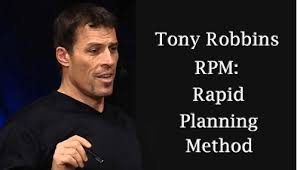By Patrick Cahillane – Life, Executive & Business Coach with One Source International Coaching and Training ( http://www.onesourceict.com ) & Founder of The One Source Personal Development Network

As a life coach, one of the most powerful tools at your disposal is the R.P.M. (Results, Purpose, Massive Action) session. This transformative approach empowers clients to clarify their goals, identify their motivations, and develop a concrete action plan. In this article, we will delve into the key steps required to conduct a successful R.P.M. session that will help your clients unlock their true potential and achieve remarkable results.
- Creating an Optimal Environment: Begin the R.P.M. session by establishing a safe and supportive space for your client. Foster a sense of trust and rapport by actively listening, showing empathy, and expressing genuine interest in their aspirations. Ensure that your client feels comfortable sharing their innermost desires and fears.
- Clarifying Desired Results: Encourage your client to articulate their desired outcomes in detail. Ask thought-provoking questions that prompt them to envision their future with clarity. By setting specific, measurable, achievable, relevant, and time-bound (SMART) goals, your client will gain a clear sense of direction and purpose.
- Exploring Purpose and Motivations: Dig deeper to uncover the underlying purpose and motivations behind your client’s desired results. Help them connect their goals to their core values, passions, and aspirations. By understanding the “why” behind their goals, your client will cultivate a strong sense of intrinsic motivation, which will fuel their commitment and resilience.
- Identifying Current Reality: Assess your client’s current situation and any factors that might impede their progress. Encourage them to honestly reflect on their strengths, weaknesses, opportunities, and threats. By gaining awareness of their present circumstances, your client will be better equipped to devise effective strategies for success.
- Brainstorming Action Steps: Collaborate with your client to generate a comprehensive list of potential actions they can take to bridge the gap between their current reality and desired results. Encourage them to think creatively and consider both small steps and bold leaps. This brainstorming process expands their perspective and opens up new possibilities.
- Prioritizing Actions: Guide your client in prioritizing the action steps based on their significance, feasibility, and alignment with their values and goals. Help them identify the critical actions that will have the most significant impact on their desired results. By focusing on a few key actions, your client can direct their energy and resources more effectively.
- Developing an Action Plan: Transform the prioritized actions into a concrete and actionable plan. Break them down into smaller, manageable steps with specific deadlines or timelines. Support your client in creating a roadmap that outlines the sequence of actions, milestones, and accountability mechanisms. A well-structured action plan enhances clarity and ensures progress.
- Addressing Potential Obstacles: Anticipate potential obstacles or roadblocks that your client might encounter along their journey. Encourage them to identify strategies for overcoming these challenges, such as developing alternative approaches, seeking support, or adjusting their mindset. Assure them that setbacks are part of the process, and resilience is key to long-term success.
- Recapitulating and Summarizing: Towards the end of the session, recap the key points discussed, including the desired results, purpose, prioritized actions, and potential obstacles. Confirm that your client has a thorough understanding of their action plan and feels empowered to take the necessary steps. Celebrate their commitment and determination.
- Follow-Up and Ongoing Support: Extend your support beyond the R.P.M. session by scheduling regular check-ins to monitor your client’s progress. Offer guidance, celebrate achievements, and provide encouragement when faced with challenges. By being a consistent source of support, you will empower your client to stay focused, motivated,and resilient throughout their journey towards achieving their desired results.
Conclusion:
Conducting a successful R.P.M. session with your clients as a life coach is a powerful way to unlock their potential and facilitate their personal and professional growth. By following the steps outlined in this article, you can guide your clients to clarify their goals, connect with their purpose, and develop an actionable plan that propels them towards their desired outcomes.
Remember, the R.P.M. session is a collaborative process that requires active listening, empathy, and the ability to ask insightful questions. By creating a supportive environment and helping your clients gain clarity on their goals, motivations, and action steps, you empower them to take massive action and make significant strides towards their dreams.
As a life coach, your role extends beyond the R.P.M. session itself. Offer ongoing support, check-ins, and accountability to help your clients stay on track and navigate any challenges they may encounter along the way. Celebrate their achievements, no matter how small, and provide guidance to help them course-correct when needed.
Ultimately, the R.P.M. session is a catalyst for transformation and success. By incorporating this powerful framework into your coaching practice, you can help your clients unleash their potential, overcome obstacles, and create a life filled with purpose, fulfillment, and achievement.
So, embrace the R.P.M. approach, and embark on this journey with your clients. Together, you can unlock their true potential and empower them to live the life they have always envisioned.
